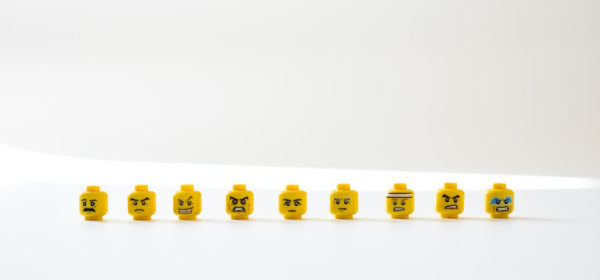A closer look: The Wheel of Emotions
Often considered taboo, yet ever-present in our daily lives, emotions require us to communicate effectively with our mind, body and feelings. Many studies show that it is better to acknowledge emotions than to try and hide them, even in the workplace. There are several approaches to learning to live peacefully with your emotions, including the Wheel of Emotions, which was developed by the American psychologist Robert Plutchik in the 1980s. We take a look at the analysis chart which has been rolled out to several other areas and serves as a basis for training in HR, marketing strategies and even children’s games.
Emotions: A user guide
Humans spend their entire lives in their own company, with their consciousness and feelings. We experience contentment, boredom, jealousy, nervousness, anxiety, astonishment… The list goes on. Well, according to the American psychologist Robert Plutchik, the list isn’t actually all that long. His works present eight specific opposing emotions that serve as a basis for all the others: joy and sadness, sympathy and disgust, fear and anger and surprise and excitement. Plutchik started from there and built a tool to map human feelings: the Wheel of Emotions.
It is like a barometer which identifies our underlying feelings and the needs they indicate. His “invention” is made up of an evolving grid of emotions that passes for example from annoyance to rage through anger. This process is also conveyed in the form of a color palette (from lighter to darker yellow, for example, in the case of ecstasy). The Wheel of Emotions also takes into account the connection between the emotions: the connection between joy and trust is likely to “produce” love, for instance.
The Wheel of Emotions: What’s the point?
The Wheel of Emotions is now used widely in HR training or coaching sessions. For example, the tool was used by coach Nathalie Colin in a Meet & Learn workshop to guide participants as they tried to identify times in the past when certain feelings were stronger than others, and then observed how they transitioned from one end of the grid to the other (aversion to remorse or astonishment to fear). By analyzing how they felt and how their feelings could have affected their decisions and behaviors, the participants in this workshop learned what tools they could use each time a situation seemed to “overwhelm” them.
The Wheel of Emotions is also effective in e-learning. To bridge the digital gap, it is important for people to stay motivated – and that objective can be achieved by arousing the right emotions in learners. People can become more interested and the usefulness of the course content reinforced if a trainer tells an amusing anecdote first (anticipation + joy => affection).
It’s not only mathematical logic, but rather a theory that can help guide people who create content for online courses. Emotions are also very important for marketing: studies show that a person’s first reaction to an image or an advertisement has an impact on their opinion about a product or brand.
An investigation carried out by the Journal of Consumer Research found, for example, that consumers who watched a frightening movie were more likely to remember a brand than those who experienced happiness (because, according to the researchers, the feeling of dread unites a group and creates a human bond around that shared experience).
The Wheel of Emotions and nonviolent communication
Learning to recognize and acknowledge emotions can also help establish non-violent communication – an approach to dialogue which advocates empathy and attentive and respectful listening. In this case, the Wheel of Emotions would help identify needs to avoid projecting anxiety, judgment or individual expectation onto the other person. For example, before typing a “passive-aggressive” email to a colleague, why not stop for a moment and see where the emotion you are feeling is leading, (annoyance may rise towards anger) and then you can start to understand that it’s possible to put a message across in other less abusive ways.
While the ability to express emotions clearly and in an empathetic and objective manner takes a lot of effort, children have even more difficulty translating what is happening in their minds and bodies. The Wheel of Emotions has been adapted for young children, and this version contains drawings and emojis which guide them through the process of non-violent communication. Like foreign languages, the language of feelings needs to be practiced regularly: all the more reason to start while you’re young!
Marcos Fernandes, for the Octave webmagazine. Translated from French by Ruth Simpson
Share this Post







